Palm Leaf Museum: Glimpse Kerala’s History in Palm Leaves
Prepare to be transported through time as you delve into Kerala’s rich history with a glimpse of 187 ancient manuscripts spanning six centuries, from 1249 CE to 1896 at Palm Leaf Museum in Thiruvananthapuram.
Kerala has once again proven that it is a state, where the written word is revered and celebrated. This state has been basking in the limelight with its 100% literacy rate, and now it has added yet another feather to its cap – the world’s first-ever Palm Leaf Manuscripts Museum. This museum is a testament to the state’s deep-rooted love for literature and is a treasure of ancient manuscripts, each one a window into the past.
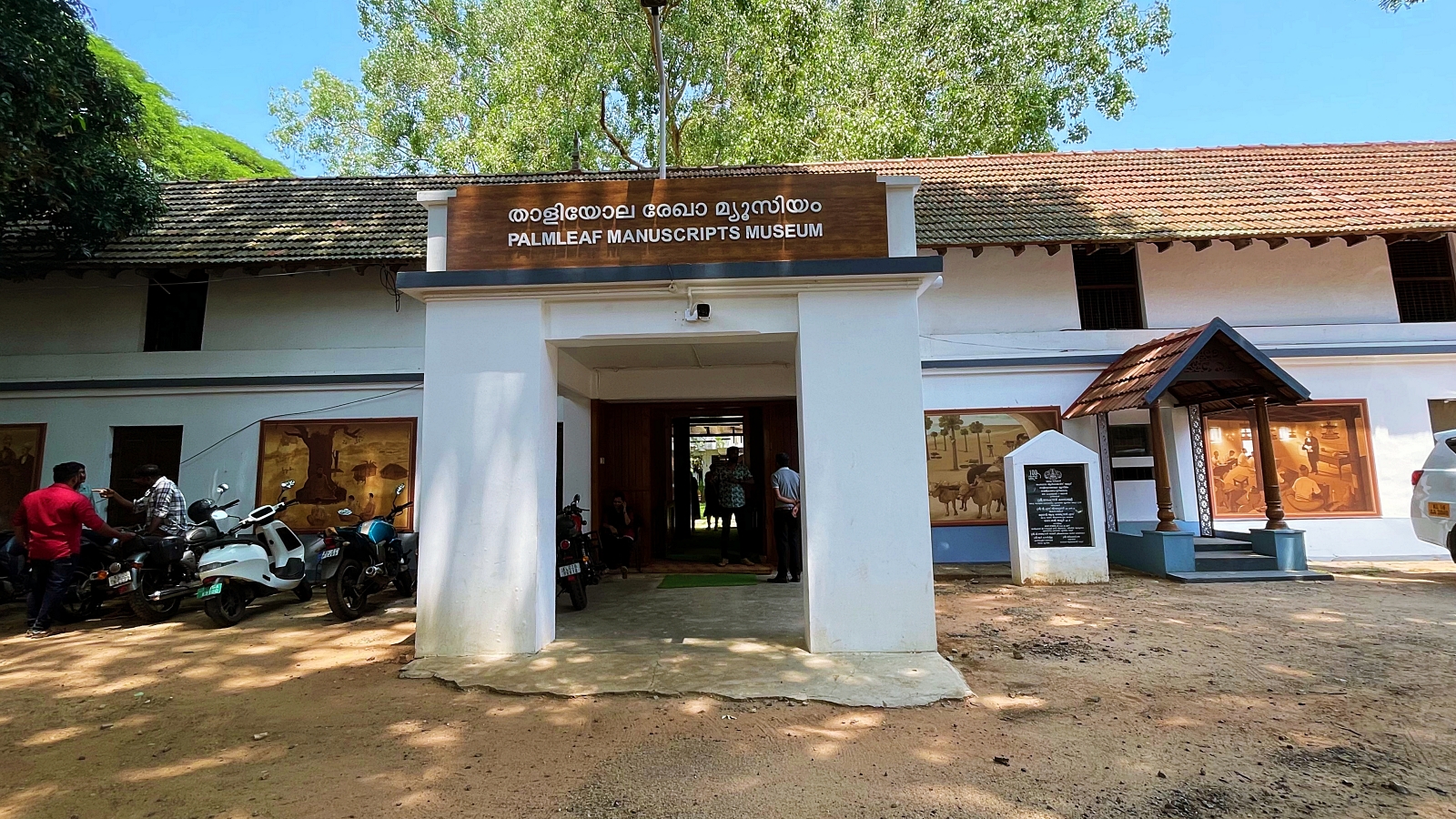
It is a celebration of the art of writing, the beauty of language, and the power of storytelling. Thus, during my recent trip to Thiruvananthapuram, the state capital, I couldn’t resist the urge to check out this modest display of ancient texts on palm leaves. I was instantly carted back in time as I stepped into the museum housed on the ground floor of a 400-year-old complex of the Central Archives. Under its clay-tile-roofed rooms lies an impressive collection of palm-leaf manuscripts that left me stunned.
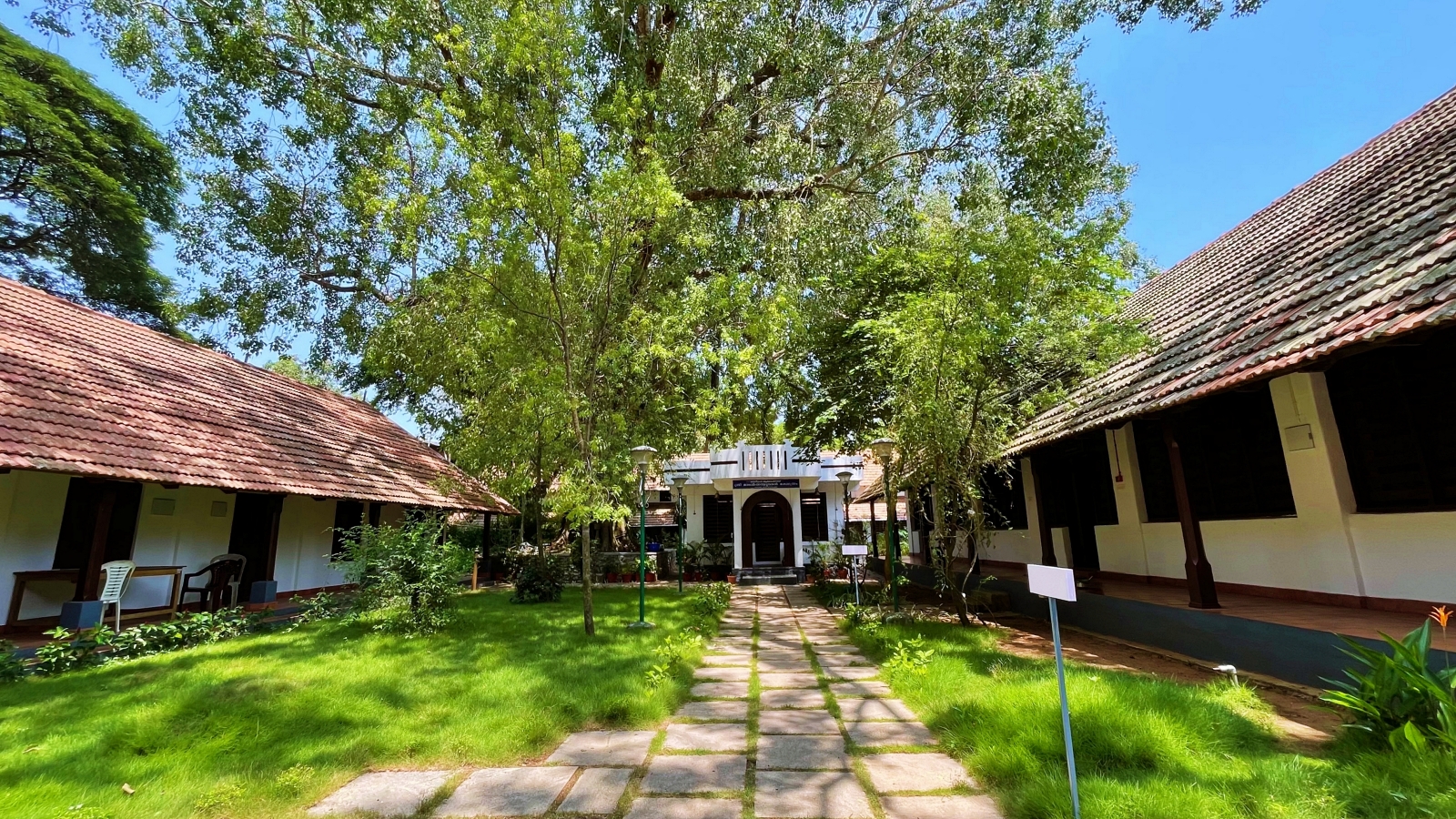
With every barefoot step I took, I was witnessing the evolution of writing and literature in India across the eight galleries that harbour 187 precious manuscripts. From financial and administrative details to cultural tales thought to have been lost to time, this collection is an interesting glimpse into the socio-cultural and economic aspects of the Travancore kingdom that reigned supreme for 650 years until the late 1800s. These ancient texts, etched onto cured and treated palm leaves span an impressive 6 centuries, from 1249 CE to 1896.
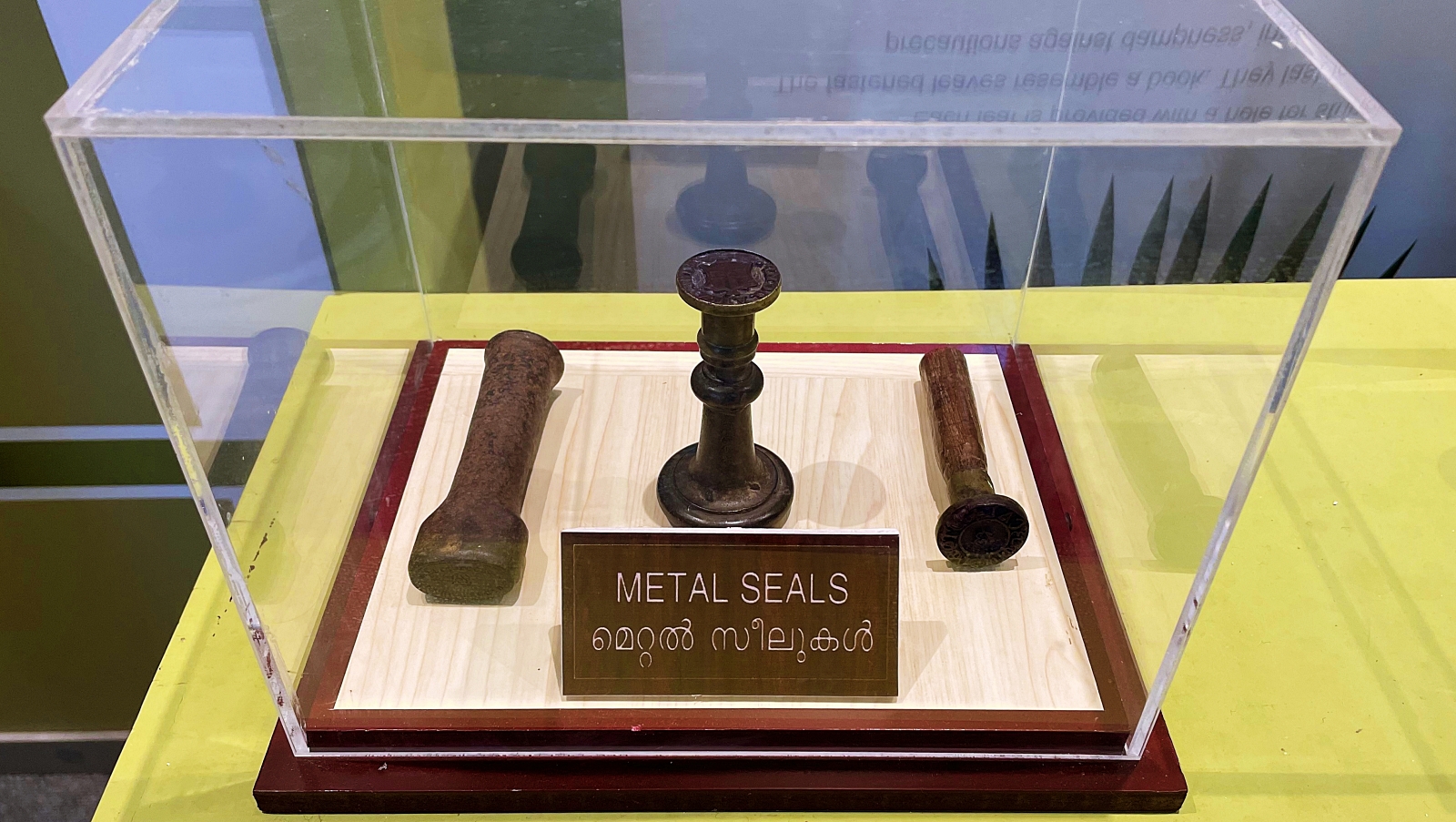
A history lesson like no other, and all this magic takes place in a 6,000-sq ft versatile space arranged by the Kerala government’s nodal agency for museums – Keralam. The team behind this colossal heritage conservation project had to sift through a whopping 1.5 crore palm-leaf records from all over the state. While they were out there collecting palm-leaf manuscripts, they stumbled upon evidence of dealings between the kings of Kochi and Malabar. The Travancore kingdom was a total powerhouse back in the day, and it’s no surprise that they were the big dogs in the trading game.
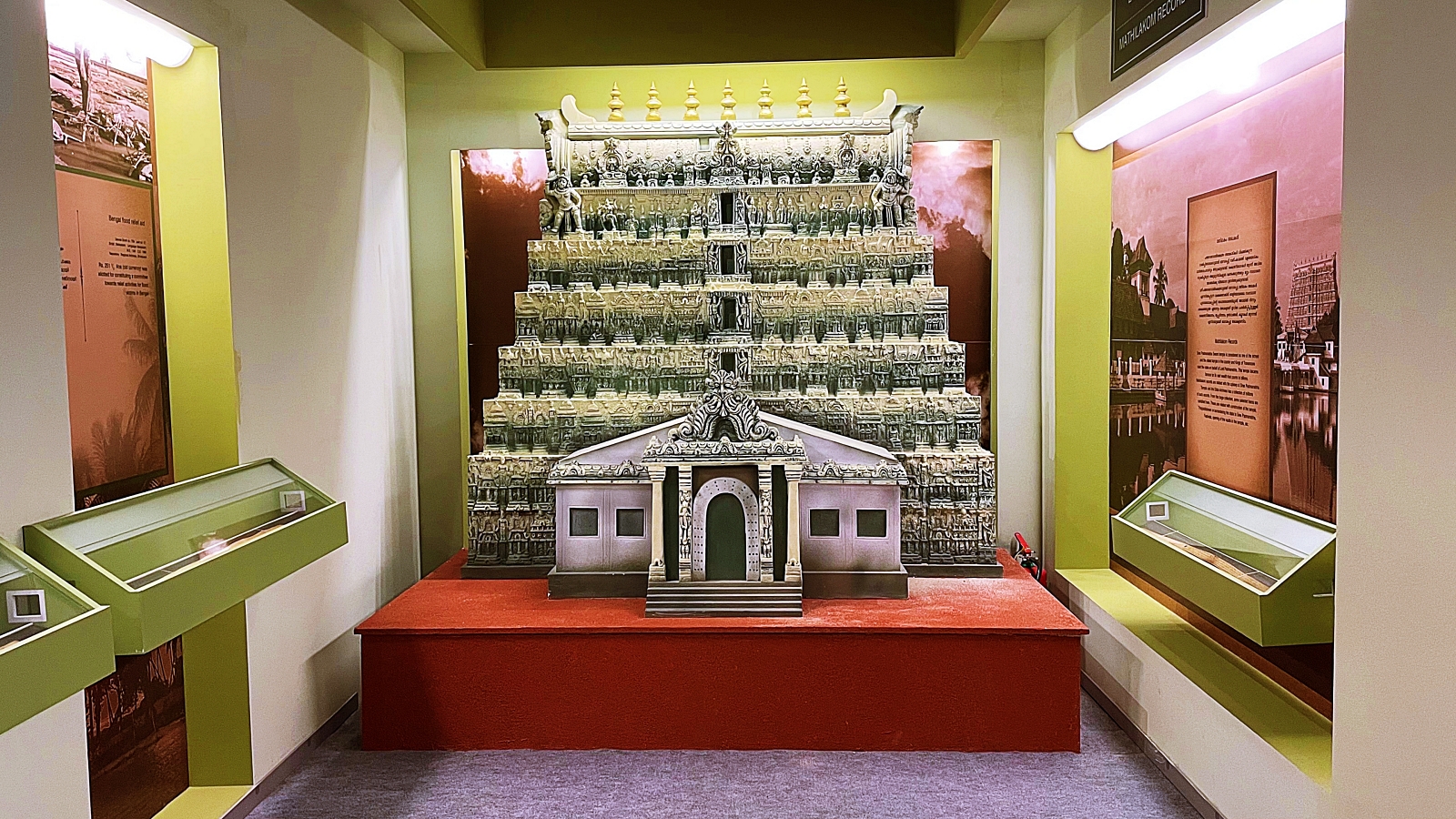
The manuscripts also shed light on the birth and progress of the Malayalam script of the region, which evolved from earlier ones like Vattezhuthu and Kolezhuthu. Most of these manuscripts were in dire straits but the conservation warriors didn’t let that stop them. They painstakingly restored each one of them, ensuring that these precious pieces of history are preserved for generations to come.
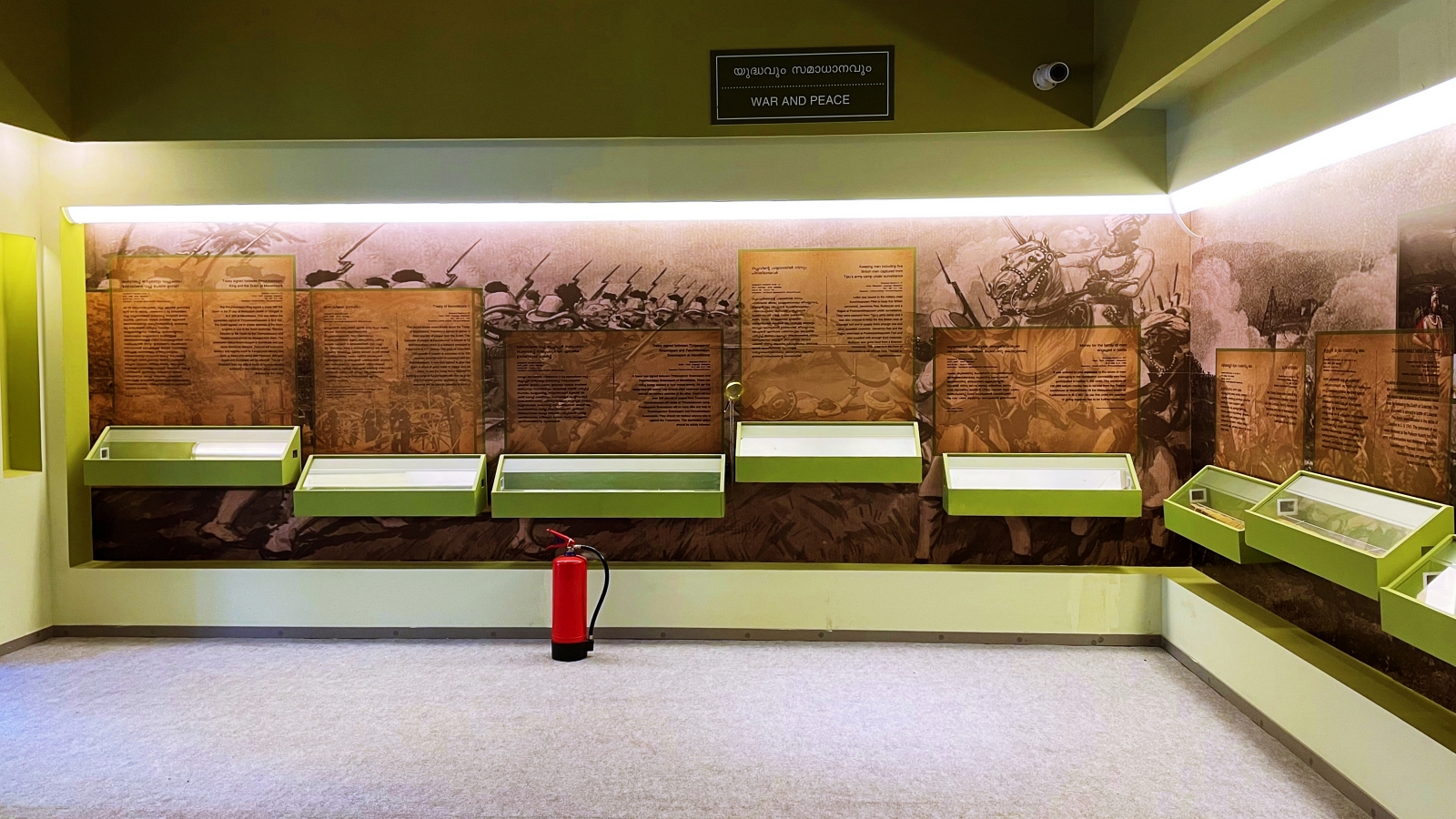
In the eight themed museum galleries, brace everything from the history of writing to Mathilakam records – a collection of 3,000 Cadjan manuscript rolls owned by the Sri Padmanabhaswamy Temple. The first gallery takes you on a journey through the evolution of writing with a special focus on Kerala. I was blown away by the Marayur cave paintings and engravings, as well as the stamps and seals used in Harappa. But the evolution of writing is anything but straightforward.
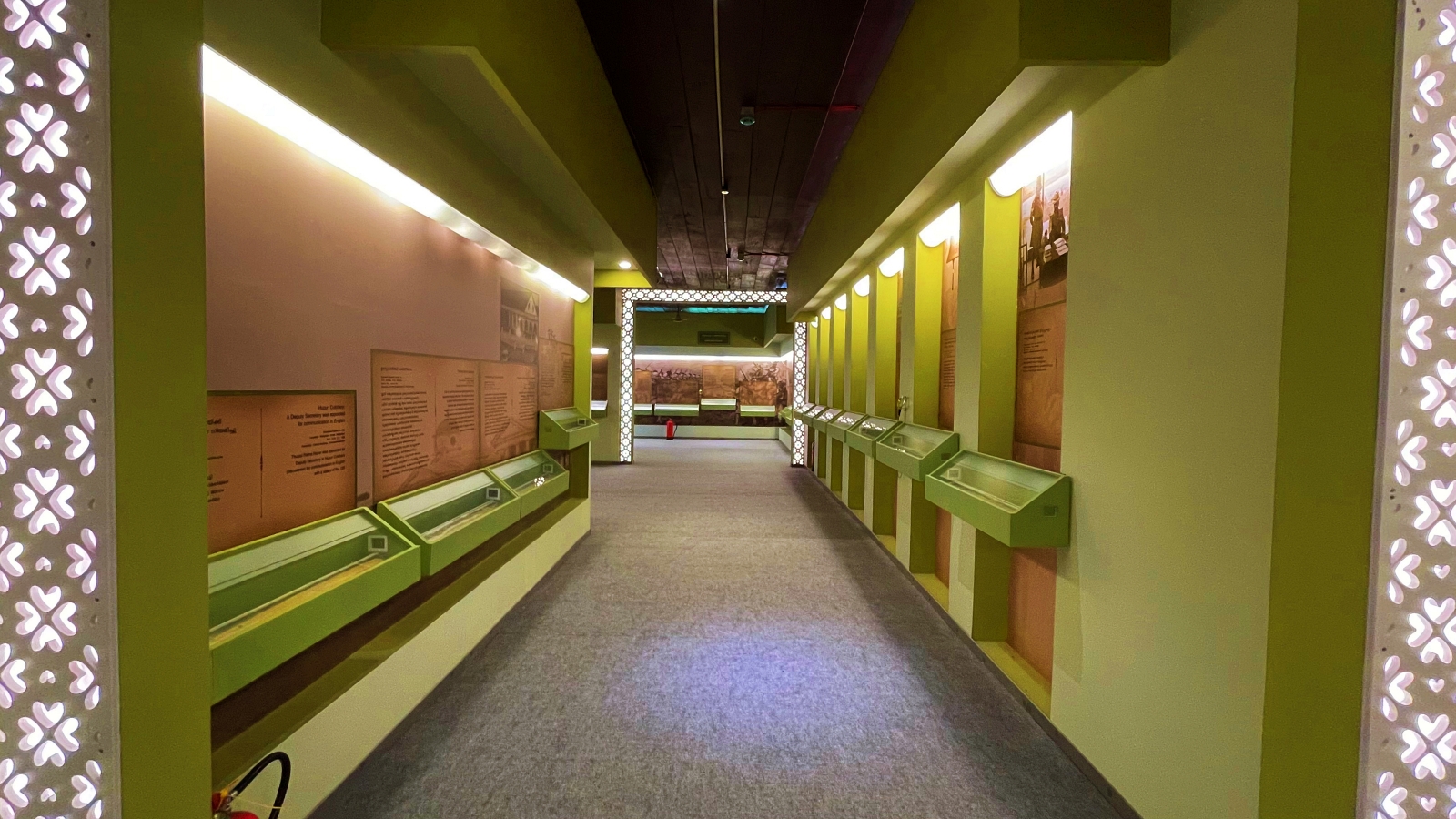
There were some serious gaps in the timeline until the Brahmi script came along with its rock inscriptions during the reign of Ashoka. From there, you move on to copper plates, brass splints, and finally palm-leaf, leaves, and bark. And if you’re wondering how the Malayalam alphabet fits into all of this – it derives from the Brahmi script which helps us trace the evolution of letters. The exhibit also features galleries on Land and People, Administration, War and Peace, Education and Health, Economy, and Art and Culture. Not only does this exhibit feature the palm leaves used for writing, but it also delves into the writing system employed.

With informative displays in both English and Malayalam, you can gain insight into the rich epigraphic history of Malayalam. Among the magnificent palm-leaf manuscripts on display at the museum lies a precious Malayalam document that sheds light on the past. It reveals how Hyder Ali, the father of Tipu Sultan, reported to Paliathachan about a whopping 30,000 Periya Varahan currency that had been deposited in the treasury. This currency was prevalent in the 18th century, and this manuscript is a testament to the rich history of Kerala.
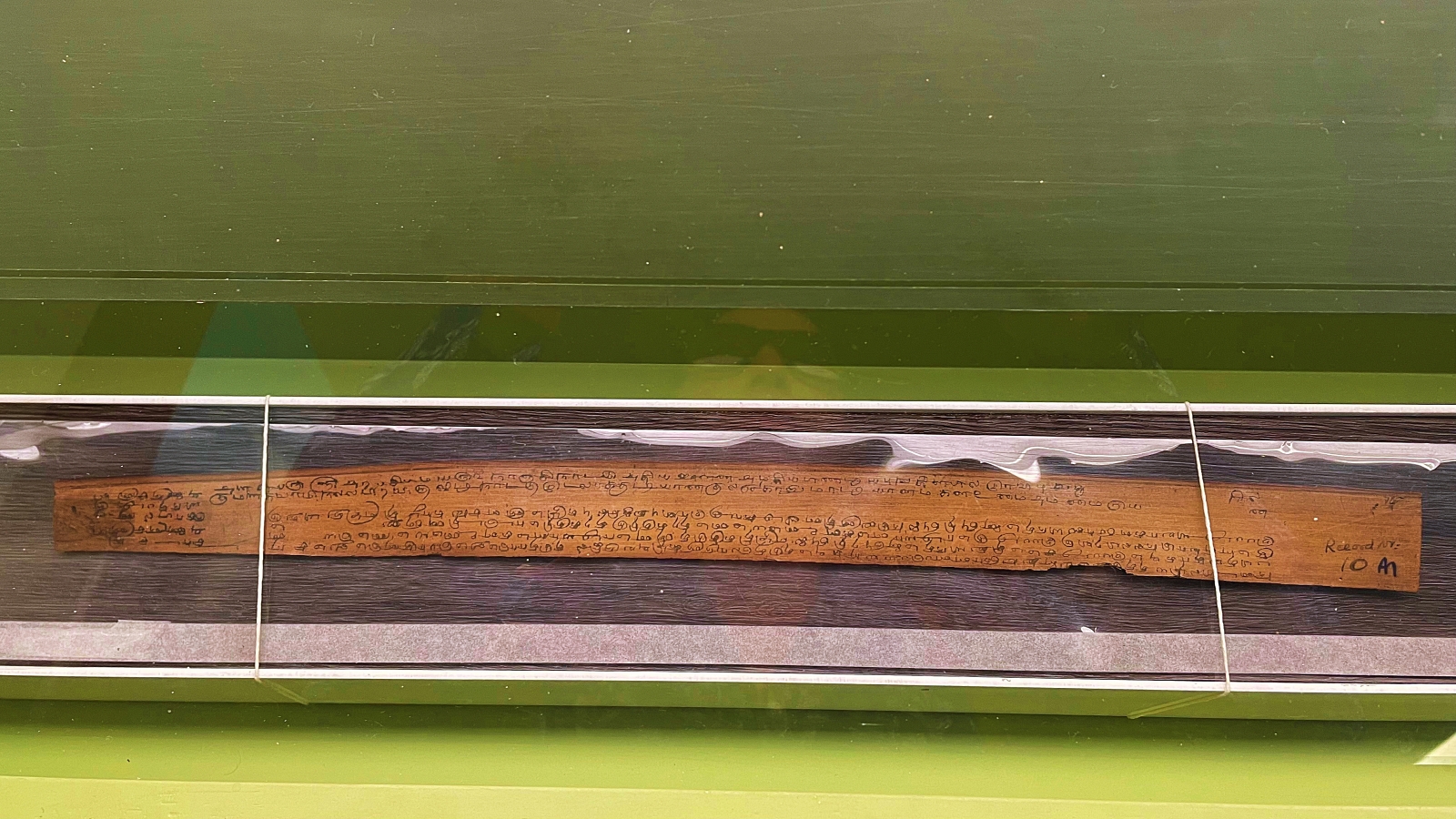
Another manuscript on display details the strict penalties imposed on officials for late attendance. This manuscript is an insight into the workings of the government in the past. But that’s not all! There’s another one that speaks of the assistance sent during the Bengal famine – a heartwarming reminder of compassion and generosity. Yet another manuscript restricts travel between Kerala and Tamil Nadu during smallpox, highlighting the measures taken to prevent the spread of the disease. These manuscripts are not just pieces with words on them. They are a window into the past, a glimpse into the lives of Keralites and a testament to the rich cultural heritage of the state that we must cherish for generations to come.
They’ve got information channels galore, including videos and QR code-based digital systems of information dissemination. And that’s not all! They use state-of-the-art storage methods designed to protect manuscripts from further deterioration. This hidden gem holds the secrets of the Travancore kingdom, offering a double dose of history that will leave you feeling like a true time traveller. This structure has an even deeper and older connection to the House of Travancore. That’s right – it isn’t just a boring old office building.
This building once served as the barracks for the Nair army of the Travancore kings, before being converted into a prison. It was originally the Central Vernacular Records Office, but thankfully it evolved into the museum we know and love today. So, if you’re a history buff or just someone who appreciates the beauty of ancient texts, then this museum is a must-visit.
How to get there: Thiruvananthapuram has excellent connectivity to the rest of the country through air, rail, and road routes. The palm leaf manuscript museum is situated on Thakaraparambu Rd in Prasanthi Nagar, which is in the Pazhavangadi area.
Timings: Open 10 am – 5 pm (closed on Monday)
Where to stay: Located in the heart of Thiruvananthapuram, Hyatt Regency Trivandrum is a stunning hotel with 132 rooms spread across eight floors. You won’t have to travel far to see all the famous landmarks in the area. Plus, the hotel has four restaurants that serve authentic Kerala and international cuisine.



